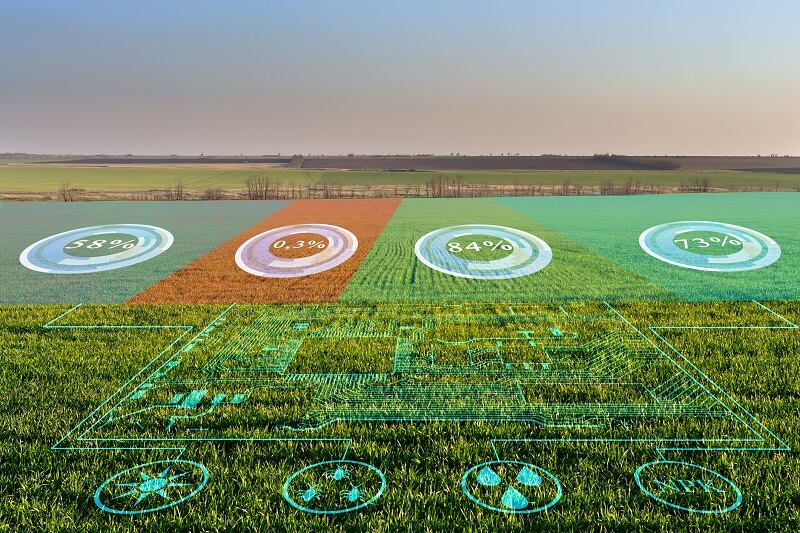The first is the need for food companies to adapt to quickly accelerating digital behaviours. According to EY’s Future Consumer Index, which is based on a survey of around 15,000 consumers globally, 48% of people believe the way they use technology will change in the long term. Some 31% of consumers will spend more on grocery delivery services post the pandemic.
Food brands consequentially need to take note of the 'metaverse'. You may know the term from Facebook’s rebrand as Meta as it invests in the idea of an immersive virtual reality world. The word was first coined in a dystopian 1992 novel. It is now defined in the Oxford English Dictionary as a “virtual-reality space in which users can interact with a computer-generated environment and other users”. The idea may seem abstract and irrelevant. But analysts believe it has the potential to disrupt ‘almost everything in human life that has not yet already been disrupted’.
One area will be food.
“The buzzword of 2022 is going to be the metaverse,” said Jon Copestake, a senior analyst at EY's Global Consumer group. “From an innovative technology perspective, food brands need to change the way they engage with consumers,” he explained.
People ‘can't eat digitally’, he told us. However, the channels of engagement that are expected to be opened up by the metaverse – and already created by the growth of the direct-to-consumer business model – means food companies need to adapt and “resolve how they can create consistency of brand experience between the digital and physical”, said the EY analyst. “One crucial area where they need to innovate is to make sure their brand is going to be something that consumers are able to enjoy an experience around as well as enjoy the product itself.”
By way of an example, take the US supermarket Kroger, which in 2020 launched Chef Bot, an AI-powered Twitter recipe tool that helps users pair the groceries in their fridge and reduce food waste by providing mealtime inspiration and personalized recommendations.
It is food companies, however, who may have greater incentive to invest in digital technology. EY’s Future Consumer Index, for example, revealed consumers are much more open now to private label. That’s because shoppers faced a lack of branded goods during the pandemic and found the switch to private label or own brand, as well as saving them some pennies, wasn’t much different.
Food brands “probably have a lot of ground to regain”, said Copestake. That means re-building the brand and its access to the consumer via investment in digital innovations.
“The metaverse is an oblique concept at the moment,” he said. "From my perspective, it's a blending of the physical and digital worlds. The concept is around building a digital version of the world that people can engage separately in.”
By way of more examples of how food companies are embracing the shift, ingredients companies too are using AI and feedback loops to develop new flavourings. Food brands are also scraping social media to identify emerging flavours to guide their product development. The best-case end result here would be the so-called Baader-Meinhof phenomenon, where food trends quickly accelerate, seemingly out of nowhere -- think salted caramel, pulled pork or brioche buns -- and enter mainstream consciousness.
Technological investments require both money and knowledge, however, which could prove potential roadblocks for adoption for companies. Systems integration and the viability of scaleability is going to be key, believes Copestake. “From a pure infrastructure perspective, bringing in new bells and whistles and bolting them on to a legacy system is very difficult for food companies,” he said. Data is also key. Without owning that you won't truly understand your consumer. That makes things like the personalisation of products and engagement difficult.
By way of illustrating the potential knowledge gap, a big bugbear for Copestake at present is buying a product from an online retailer, which then recommends the same product for the next purchase. “If people with complex algorithms can't seem to get them right then it's going to be quite difficult for a food company to create that 360-degree experience at this stage.”
‘Veg by stealth’ and renewed focus on health and wellness
EY’s Future Consumer Index also identified a renewed focus on health and wellness as another of this year’s megatrends. EY is seeing a lot of companies introducing 'veg by stealth' to make their products more plant-based without undermining the fact that they do have meat content, Copestake told us. This move will appeal to flexitarians looking to cut down on their meat consumption and may help reduce the negative health impact of the product, he said.
Perceptions of health have also shifted much more to mental health, he observed. “In the beverage industry we're seeing ingredients like adaptogens, nootropics and CBD which were buzzwords a few years ago are now moving into the mainstream.
"If you think about functional drink launches, these used to be around vitamin-enriched to make you feel healthier. Now they’re about mental wellbeing to make you more relaxed and calmer. That’s something beverage companies are doing. I haven't seen food brands do it yet but what happens in the beverage industry is often a precursor to food trends.”
The rising prominence of ESG and sustainability
The rising prominence of ESG and sustainability is another trend to emerge from the survey. Some 43% of consumers will not purchase from an organisation if it does something socially or environmentally inappropriate. Meanwhile, 38% of consumers feel that ‘responsible production and consumption of goods and services’ should be the top priority for businesses.
The biggest challenge for food companies from a sustainability perspective as we approach COP26's 2030 targets is around how they can secure and develop transparency in their supply chains, Copestake noted. Companies will look to make that "part of their value proposition as a differentiating factor so that people can see and understand the products that they're consuming,” he said.
A big challenge here for food companies of course is communicating these efforts – which may involve the installation of innovative cloud-based platforms or blockchain technology throughout complex supply chains -- in a way that's easily and quickly understandable for their customers.
Inflation fears
The sustainability trend may further find itself at odds with an environment of rising inflation. The FAO Food Price Index has just for example hit a 10-year high in 2021. "That's one of the key tensions we're coming across,” said Copestake. “Consumers don't want to pay for sustainability. In the survey only around 17% of consumers were willing to pay a premium for sustainability, although many said they were willing to pay more for sustainability in the products they consume."
There are however solutions availabel to food manufacturers that are relatively cost-effective, he insisted. "The cost of beef, for example, is significantly higher than the cost of vegetables. If you're recalibrating and reformulating your products with a higher vegetable content you'll probably encounter higher CAPEX costs initially, but the running costs of that product will be lower.”
Changing ways of working and living
Changing ways of working and living is another trend identified by EY’s Future Consumer Index. Is omicron a sign the pandemic is reaching its denouement and that life will, with a heavy sigh of relief, return to normal? Or a reminder that it and consequent 'lockdowns by stealth' will remain with us for the foreseeable? That's a question best left for debate by governments and their scientific advisors.
Food companies, regardless, need to adapt to the 'still significant' shift towards consuming at home. EY’s Future Consumer Index revealed that 43% of consumers say they plan to cook more for themselves and their family in the future. Some 45% of consumers expect to change how they eat out in the long term. "Consumers have got more confident about cooking at home now," said Copestake.
Scratch cooking, though, is just not a realistic and convenient option for most shoppers. Food companies can therefore expect to toy with the challenge of making products containing the optimal level of processing. According to Copestake, consumers are not seeking fully processed foods to bung in a microwave. Nor do they want to spend valuable time grating, for instance, their own turmeric. They will instead increasingly seek hybrid options, he believes, that can offer convenience and speed as well as the pleasure of a home-cooked meal. "Finding the balance is going to be key,” he observed. “An interesting portfolio play for companies to make is how much do they process the food before it gets to a point where consumers don't see it as something that they are home cooking."
Identity crisis?
There’s a final challenge and opportunity for food brands in what promises to be ‘the year of the metaverse’. This involves the challenge of adapting to new digital technology and consumer demands without sacrificing brand core identity or compromising their original vision, mission and values.
For example, Copestake asked: “When does a food company become a health company? When does a health company become a food company? When does a flavouring company become a technology company? All of these things are possible. Food companies are effectively brands that sell products to people that they can eat. But they can now do a lot more than that.”



